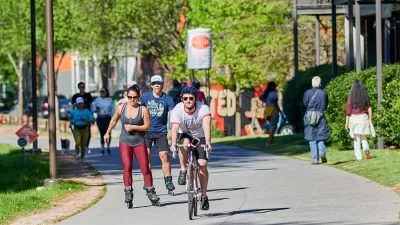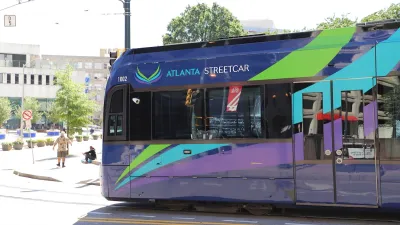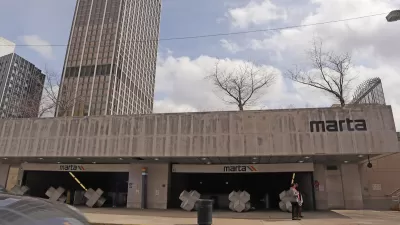The city once had an extensive streetcar system. Can it revive public transit once again?

An article in Atlanta Magazine by Rachel Garbus reminds readers that Atlanta once had a thriving public transportation system. “For the first half of the twentieth century, Atlanta’s public transportation system rivaled even that of bigger Northern cities like Baltimore and Pittsburgh. By 1928, the city’s streetcar system was so extensive, you could hop on in East Point and ride up to North Druid Hills, only changing trains once.”
The article includes historic photos of the city’s former electric streetcar system and explains how the system grew, then declined. At first, the (segregated) streetcars were operated by private companies. “Georgia officials mostly ignored public transit, pouring public dollars into highways instead. By the time MARTA took over transit as a public agency in 1972, the car had already won the fight for metro Atlanta.”
Now, traces of this history remain as opposition to public transit projects face opposition from “transit skeptics who think it’s a waste of taxpayer money to homeowners concerned about outsiders coming to their neighborhoods.”
Nicholas Bloom, author of The Great American Transit Disaster, says Atlanta may never reach world-class transit city status — “there’s been too much development to reverse engineer a public transit system” — “but he sees many opportunities to get people out of the cars into other modes of transportation.”
FULL STORY: Atlanta used to have extensive public transit, actually

Alabama: Trump Terminates Settlements for Black Communities Harmed By Raw Sewage
Trump deemed the landmark civil rights agreement “illegal DEI and environmental justice policy.”

Planetizen Federal Action Tracker
A weekly monitor of how Trump’s orders and actions are impacting planners and planning in America.

The 120 Year Old Tiny Home Villages That Sheltered San Francisco’s Earthquake Refugees
More than a century ago, San Francisco mobilized to house thousands of residents displaced by the 1906 earthquake. Could their strategy offer a model for the present?

In Both Crashes and Crime, Public Transportation is Far Safer than Driving
Contrary to popular assumptions, public transportation has far lower crash and crime rates than automobile travel. For safer communities, improve and encourage transit travel.

Report: Zoning Reforms Should Complement Nashville’s Ambitious Transit Plan
Without reform, restrictive zoning codes will limit the impact of the city’s planned transit expansion and could exclude some of the residents who depend on transit the most.

Judge Orders Release of Frozen IRA, IIJA Funding
The decision is a victory for environmental groups who charged that freezing funds for critical infrastructure and disaster response programs caused “real and irreparable harm” to communities.
Urban Design for Planners 1: Software Tools
This six-course series explores essential urban design concepts using open source software and equips planners with the tools they need to participate fully in the urban design process.
Planning for Universal Design
Learn the tools for implementing Universal Design in planning regulations.
Clanton & Associates, Inc.
Jessamine County Fiscal Court
Institute for Housing and Urban Development Studies (IHS)
City of Grandview
Harvard GSD Executive Education
Toledo-Lucas County Plan Commissions
Salt Lake City
NYU Wagner Graduate School of Public Service





























